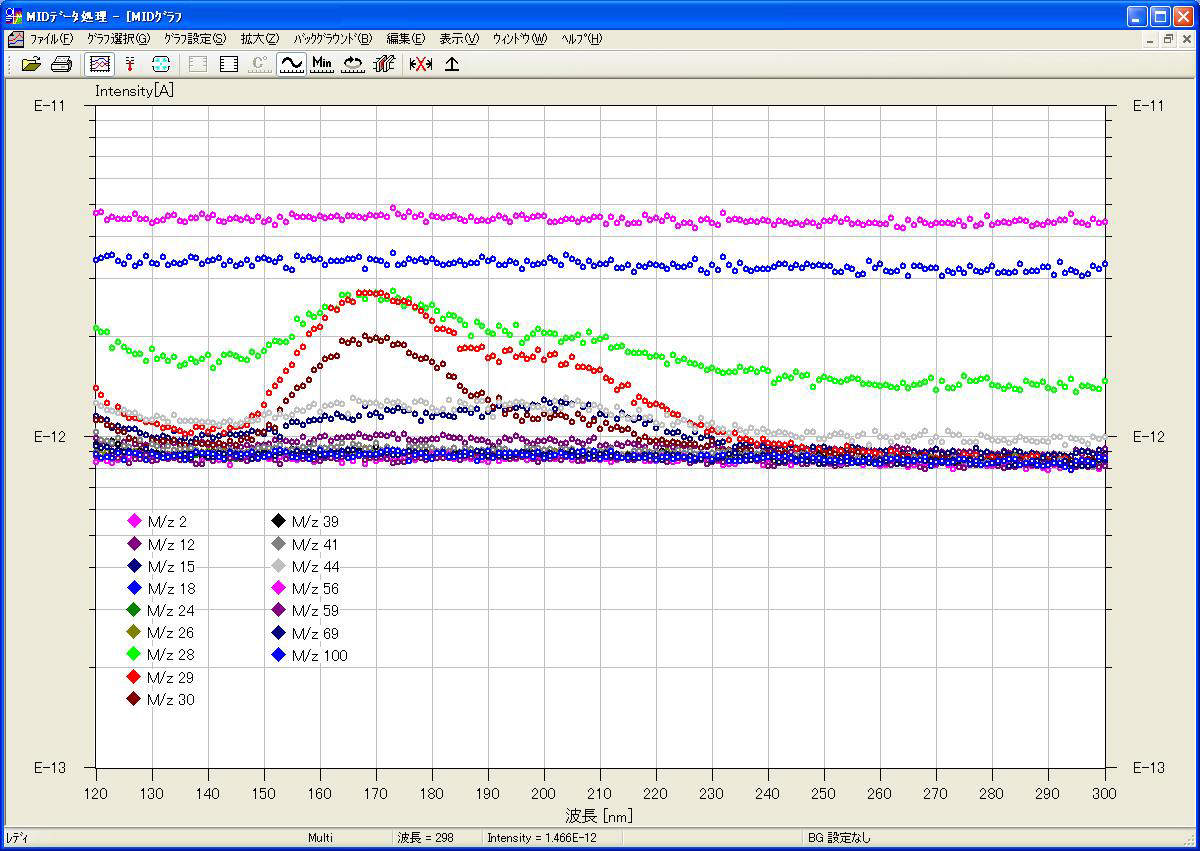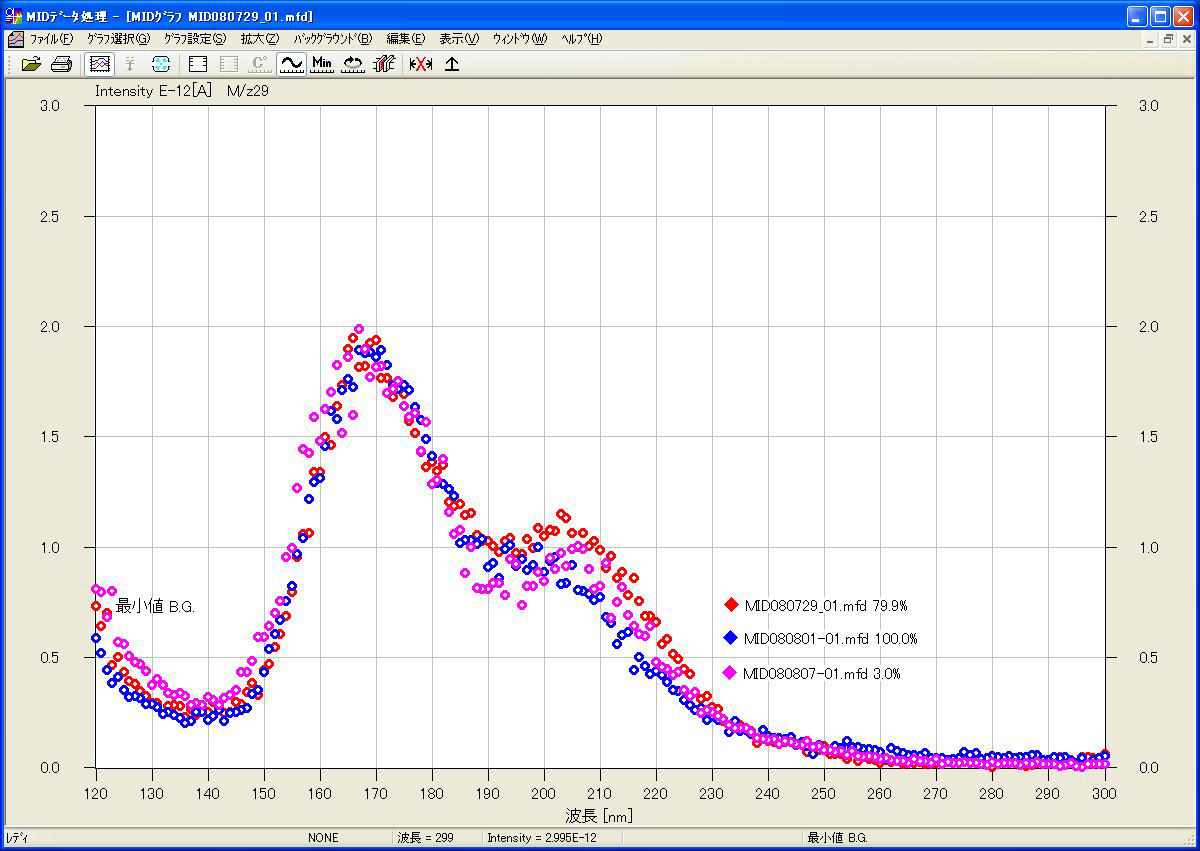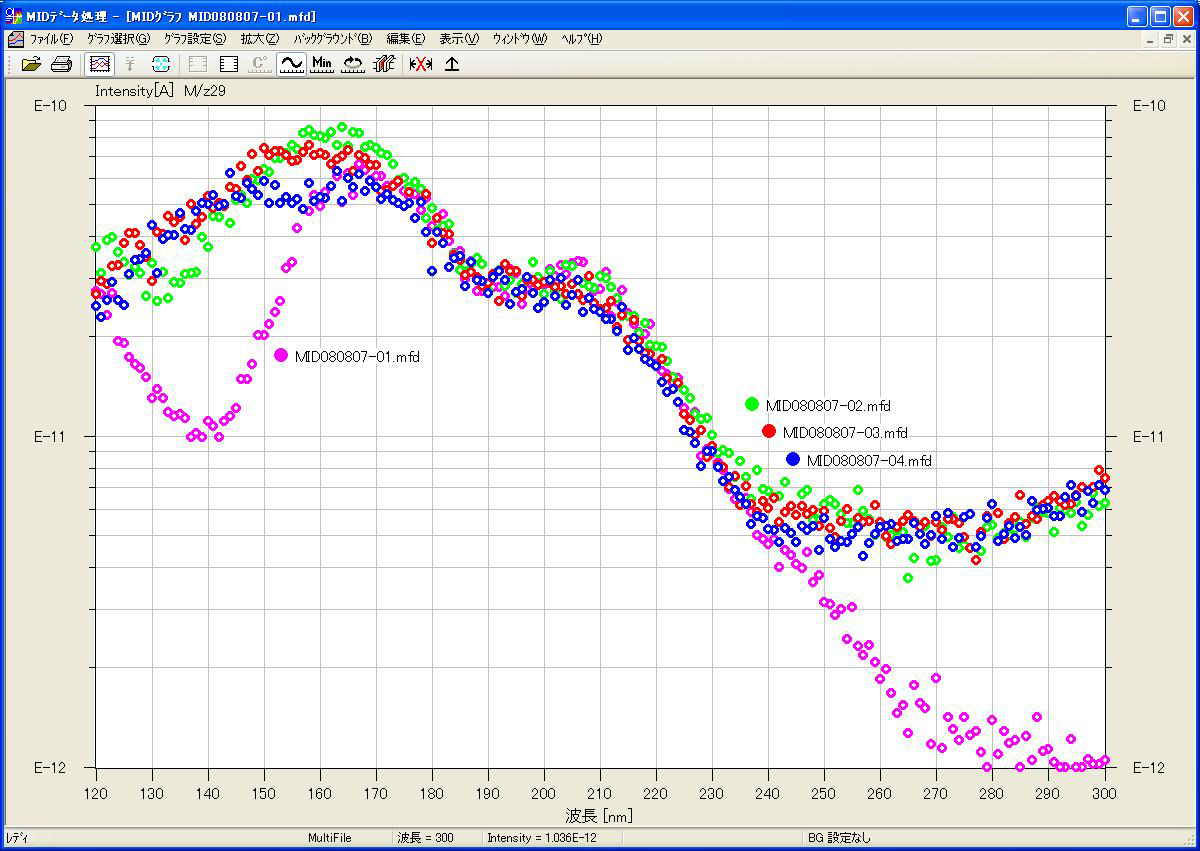PMMA Experimental Data
We conducted photodissociation experiments on PMMA (polymethyl methacrylate, acrylic) to verify the principle of the apparatus. The objective here is to confirm that the sample absorbs light and dissociates different components at each wavelength.
Figure 1 shows the photodissociation data for the PMMA film at room temperature.
Dissociation of methyl and ethyl groups can be observed at 170 nm and 210 nm.

Figure 1: Photodetachment data of PMMA film at room temperature
Figure 2 shows the photodetachment data for the same PMMA film at room temperature, comparing mass number 29 when three samples were measured on separate days.
Small signal shifts were observed because the signal amplification rate of the mass spectrometer was changed between measurements, and sample preparation was also performed separately.

Figure 2: Changes in the PMMA membrane over time
Figure 3 also shows photodetachment data for the PMMA film at room temperature. This data was obtained by repeatedly performing photodetachment on a single sample left stationary in an ultra-high vacuum environment. Only the first set of data exhibits a different signal shape.
Furthermore, measuring the PMMA film thickness after photodetachment revealed a 4 nm reduction in thickness per photodetachment measurement.
This suggests that the first measurement represents data from a PMMA film affected by atmospheric conditions, while subsequent measurements represent data from a pure PMMA film.

Contact Us
If you have any questions or concerns about our products,
please feel free to contact us using the inquiry form below.
